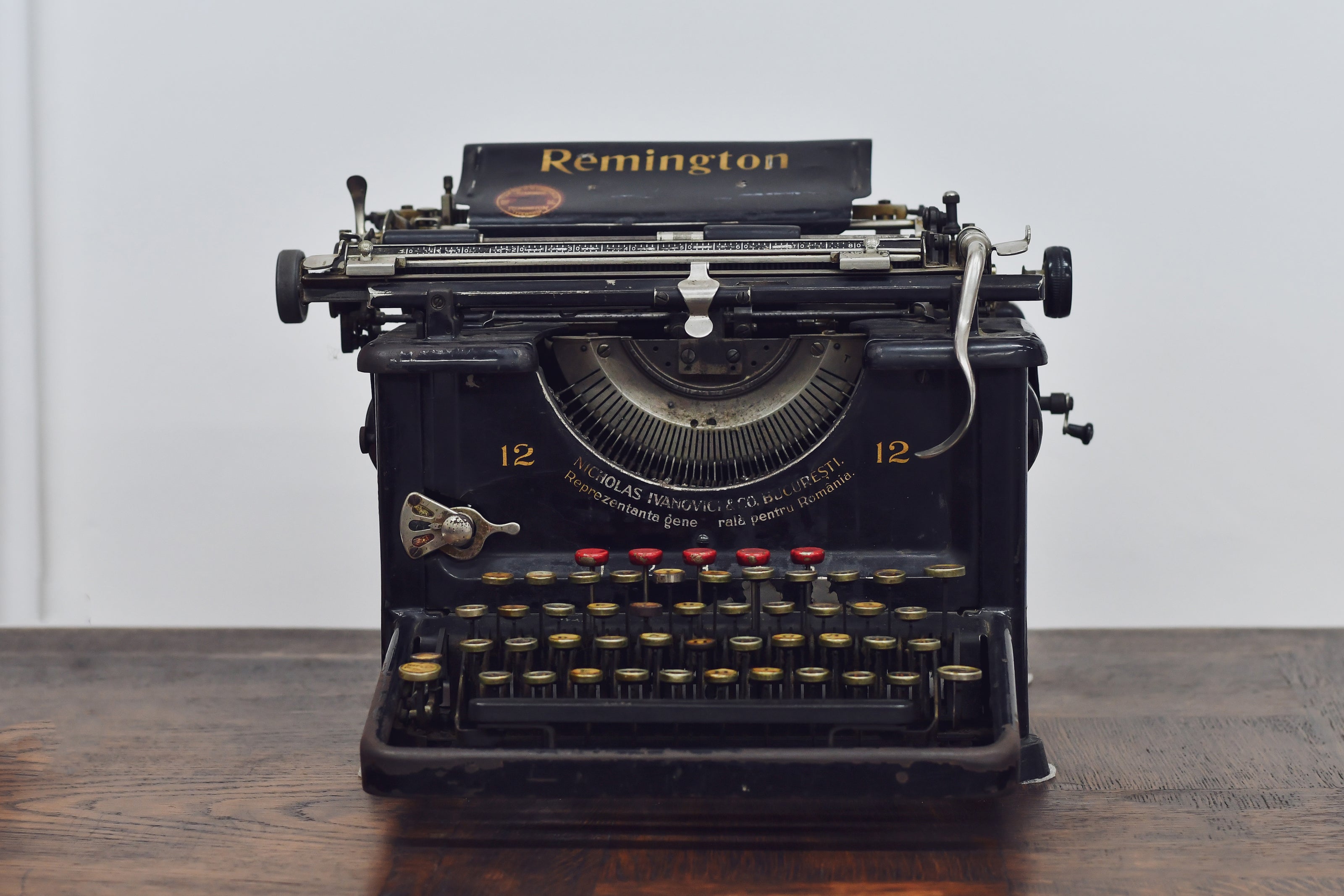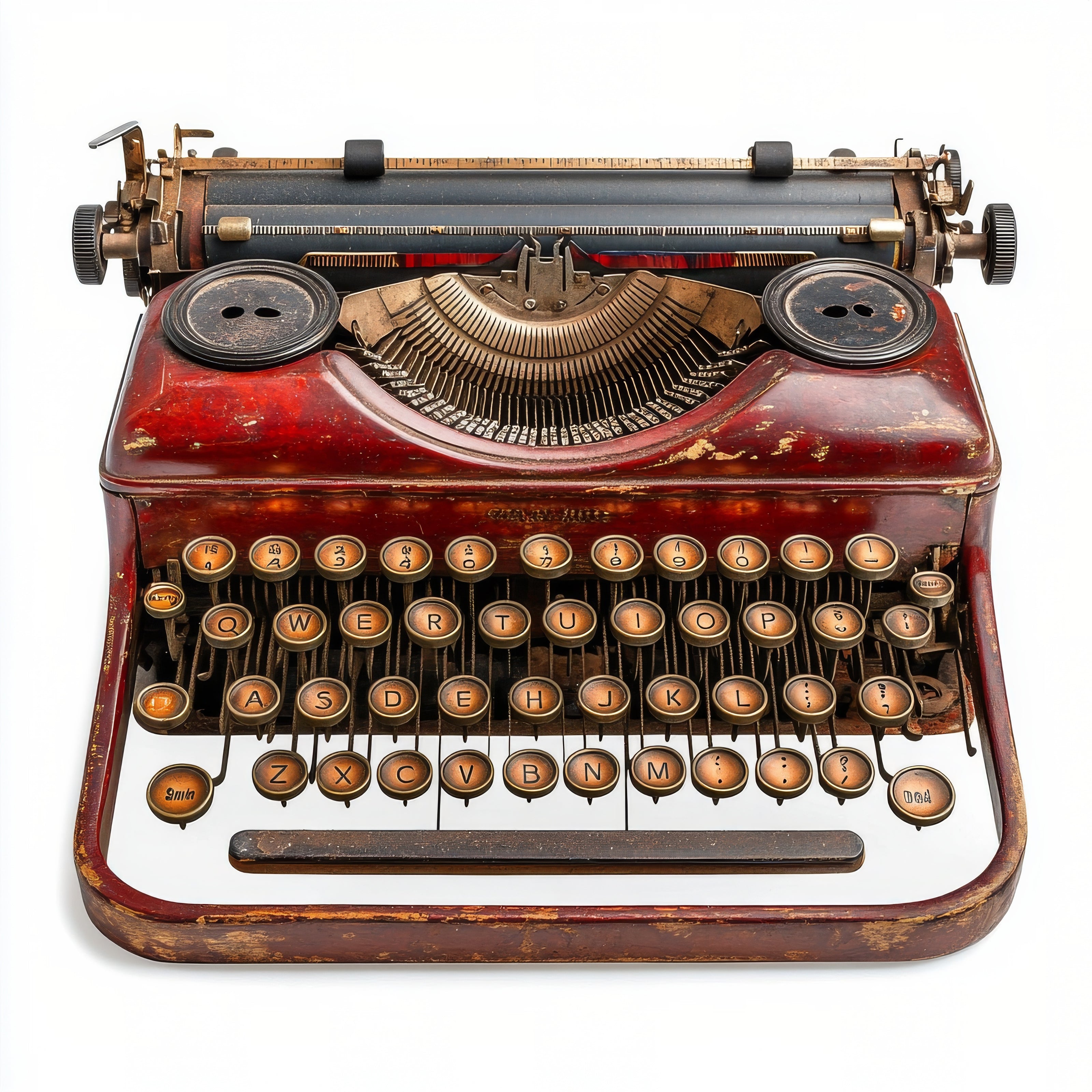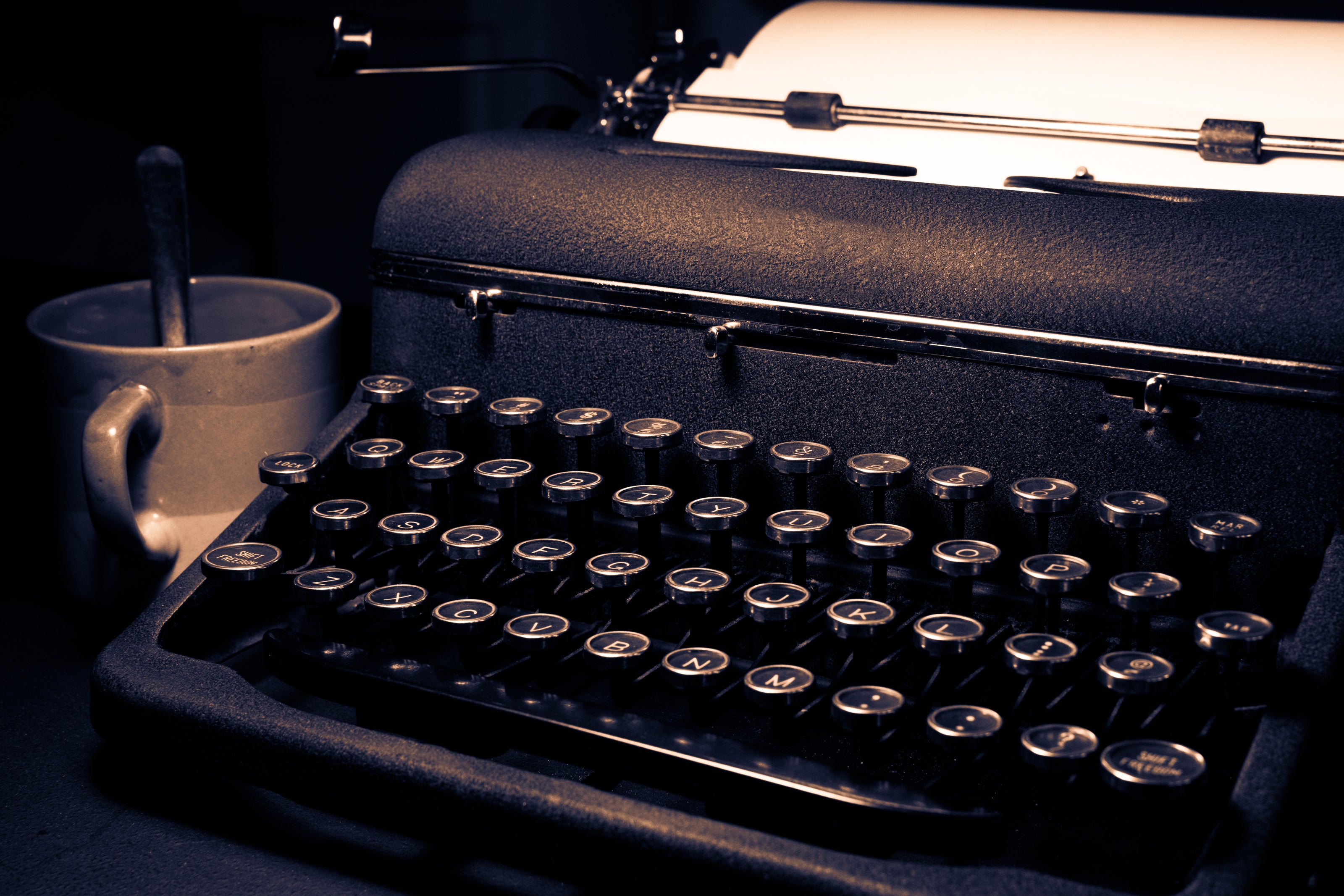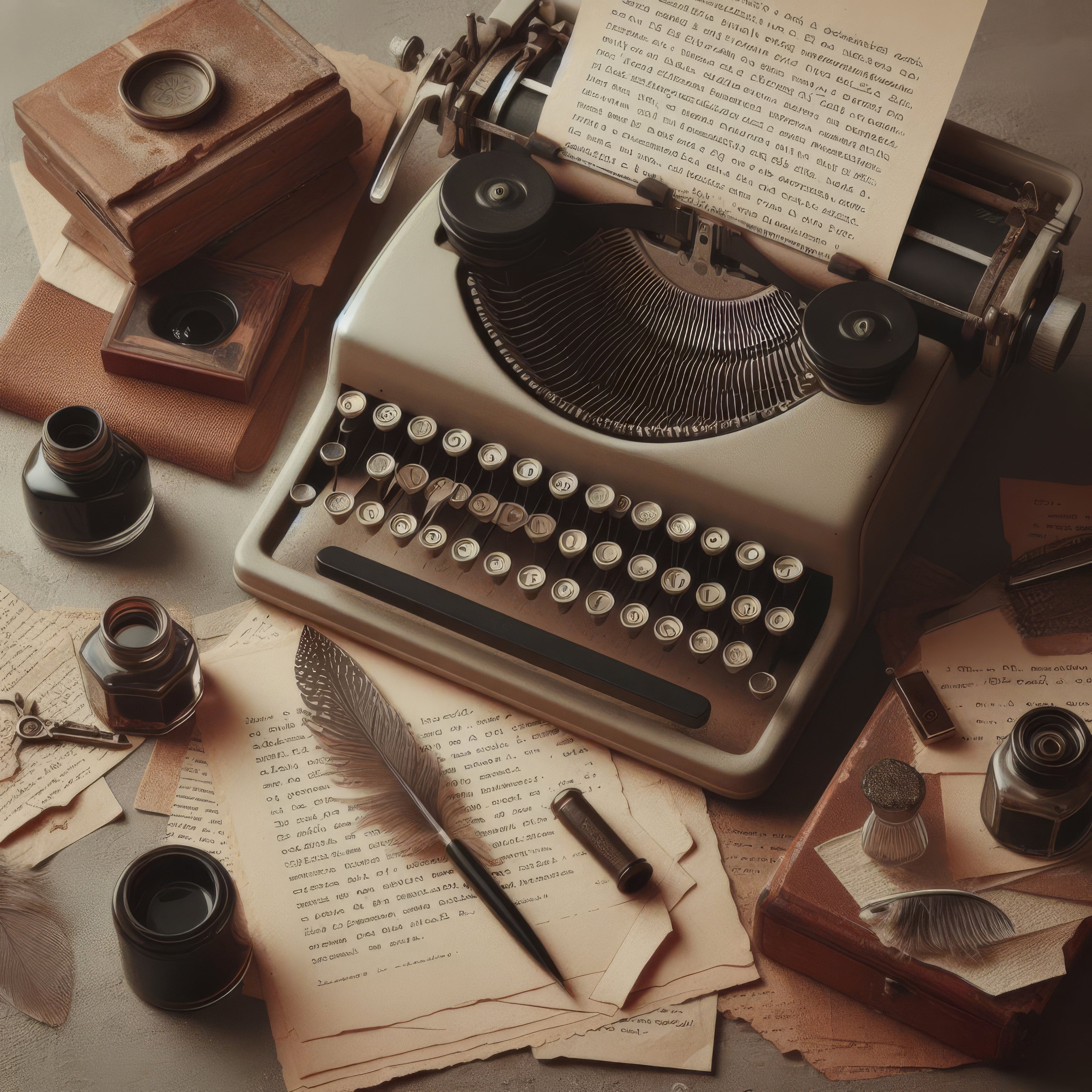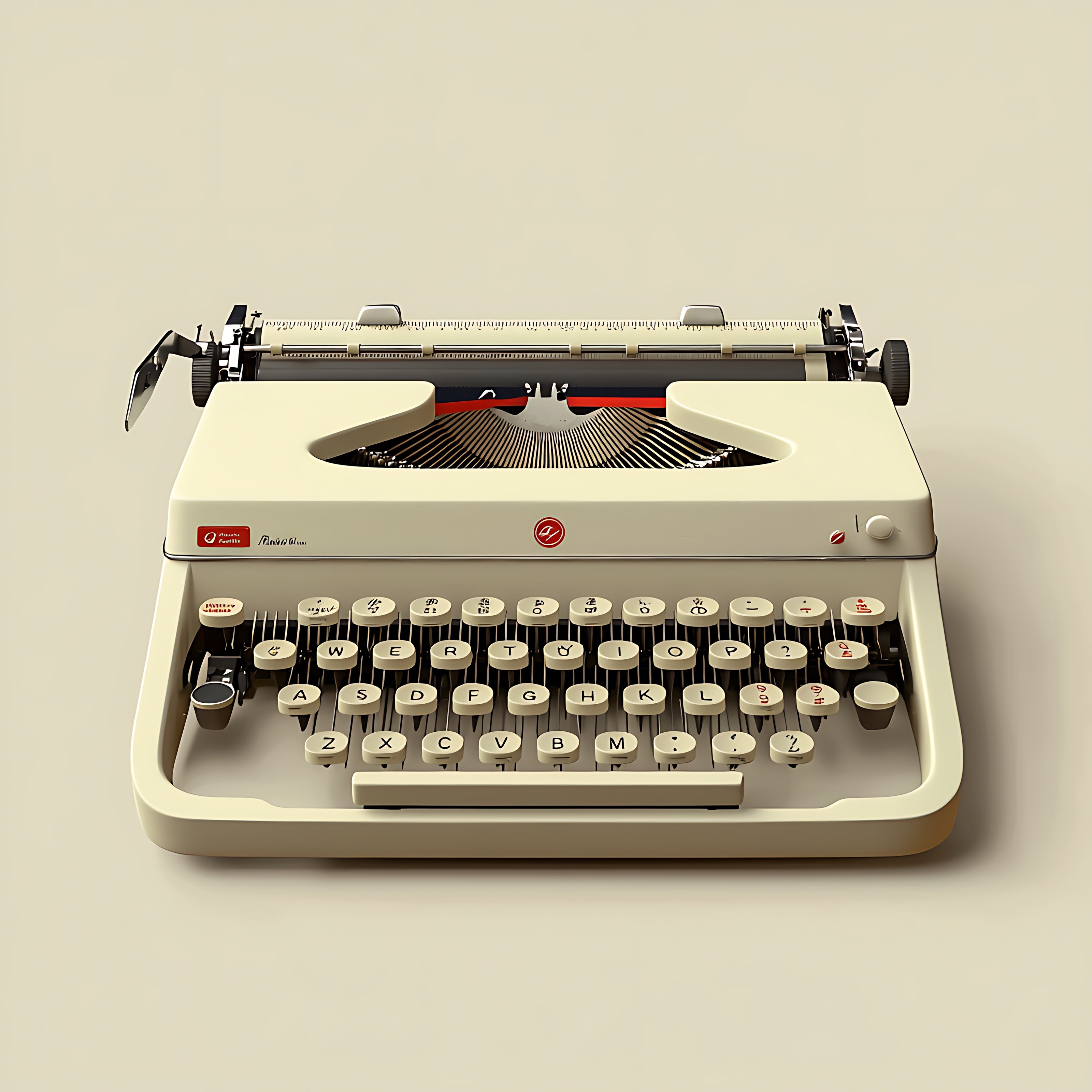
"Typing the Past, One Keystroke at a Time" ⌨️✨
Typewriters: The Art of Mechanical Writing
Typewriters symbolize an era when writing was an art, every keystroke carried weight, and each page told a story through the rhythmic sound of striking typebars. Before the digital age, these mechanical marvels revolutionized communication, making writing faster, more efficient, and widely accessible.
The Origins: The Birth of the Typewriter
The history of the typewriter dates back to the early 19th century, with inventors across the world attempting to create a machine that could produce uniform text. However, it was Christopher Latham Sholes who, in 1868, developed the first commercially successful typewriter, which later became the Sholes and Glidden Typewriter (also known as the Remington No.1). This model introduced the QWERTY keyboard layout, which remains the standard today.
While Sholes is credited with popularizing the typewriter, earlier prototypes by inventors like Pellegrino Turri (who developed a machine for a blind friend) and William Austin Burt paved the way for its evolution.
The typewriter became an indispensable tool for offices, writers, and journalists, fundamentally changing how people recorded and shared information.
Innovation and Evolution
Over the decades, typewriters evolved through various technological advancements, each improving efficiency and usability.
1. Early Mechanical Typewriters (1870s-1920s):
The first mass-produced typewriters featured manual key actuation, where pressing a key caused a metal typebar to strike an inked ribbon, transferring the character onto paper.
🔹 Key Feature: QWERTY keyboard and upstrike mechanism.
🔹 Impact: Standardized typing and improved written communication speed.
2. Standardized Office Typewriters (1920s-1950s):
By the early 20th century, Underwood, Remington, and Royal dominated the market with refined designs featuring visible typing, allowing typists to see their work as they typed.
🔹 Key Feature: Front-strike mechanism for clearer visibility.
🔹 Impact: Increased productivity in business and administration.
3. Portable Typewriters (1930s-1970s):
Compact, lightweight models became popular among journalists, students, and writers on the go. Brands like Smith-Corona, Hermes, and Olivetti designed sleek, travel-friendly machines.
🔹 Key Feature: Lightweight and easy to carry.
🔹 Impact: Made writing more accessible beyond office settings.
4. Electric Typewriters (1950s-1980s):
The introduction of electric models by IBM and Smith-Corona replaced the mechanical key strike with a motorized system, reducing finger fatigue and increasing typing speed.
🔹 Key Feature: Electrically powered keystrokes for effortless typing.
🔹 Impact: Improved efficiency in professional environments.
5. Daisy Wheel and Electronic Typewriters (1970s-1990s):
Electronic typewriters introduced daisy wheel printing, memory storage, and correction features, bridging the gap between traditional typewriters and early computers.
🔹 Key Feature: Built-in memory for storing text and easy corrections.
🔹 Impact: Streamlined office work before the rise of computers.
Cultural Impact and Usage
Typewriters were more than just writing tools—they were instruments of creativity and expression.
📖 Literature: Iconic authors like Ernest Hemingway, Agatha Christie, and Hunter S. Thompson relied on typewriters to craft their masterpieces.
📜 Journalism: Before computers, newsrooms were filled with the clatter of typewriters as reporters raced to meet deadlines.
🏢 Business: Offices used typewriters for official correspondence, invoices, and record-keeping.
🎬 Hollywood & Pop Culture: Typewriters became symbols of nostalgia, prominently featured in films and TV shows depicting classic writers and journalists.
Interesting Facts About Typewriters
✒️ The first email ever sent was from a QWERTY keyboard, originally designed for typewriters.
✒️ Mark Twain was the first author to submit a typewritten manuscript—The Adventures of Tom Sawyer.
✒️ The longest word that can be typed using only the top row of a QWERTY keyboard is "typewriter"!
Why Typewriters Matter Today
Though computers have largely replaced typewriters, these mechanical marvels remain beloved for their tactile feel, nostalgic charm, and distraction-free writing experience. Many enthusiasts, writers, and collectors cherish typewriters as symbols of craftsmanship and a bygone era of literary creativity.

